Broken ankle and torn ligament. Broken Ankle vs. Torn Ligament: A Comprehensive Comparison
What’s the difference between a broken ankle and a torn ligament? Learn how to identify the symptoms and get the right treatment for your ankle injury.
Differentiating Between a Broken Ankle and a Torn Ligament
Ankle injuries can be tricky to diagnose, as the symptoms of a broken ankle and a torn ligament can often be similar. However, understanding the key differences between these two conditions is crucial for receiving the appropriate treatment and ensuring a successful recovery.
Broken Ankle: Causes and Symptoms
A broken ankle, also known as an ankle fracture, occurs when one or more of the three bones that make up the ankle joint (the tibia, fibula, and talus) are broken. This can happen due to a sudden impact or trauma, such as a fall or a car accident. Symptoms of a broken ankle include:
- Severe pain and swelling in the ankle area
- Bruising or discoloration
- Difficulty or inability to bear weight on the affected ankle
- Visible deformity or misshaping of the ankle
- A “popping” or “cracking” sound at the time of injury
Ankle Sprain: Causes and Symptoms
An ankle sprain occurs when the ligaments that stabilize the ankle joint are stretched, partially torn, or completely torn. This typically happens when the ankle is twisted or rolled, causing the ligaments to be overstretched. Symptoms of an ankle sprain include:
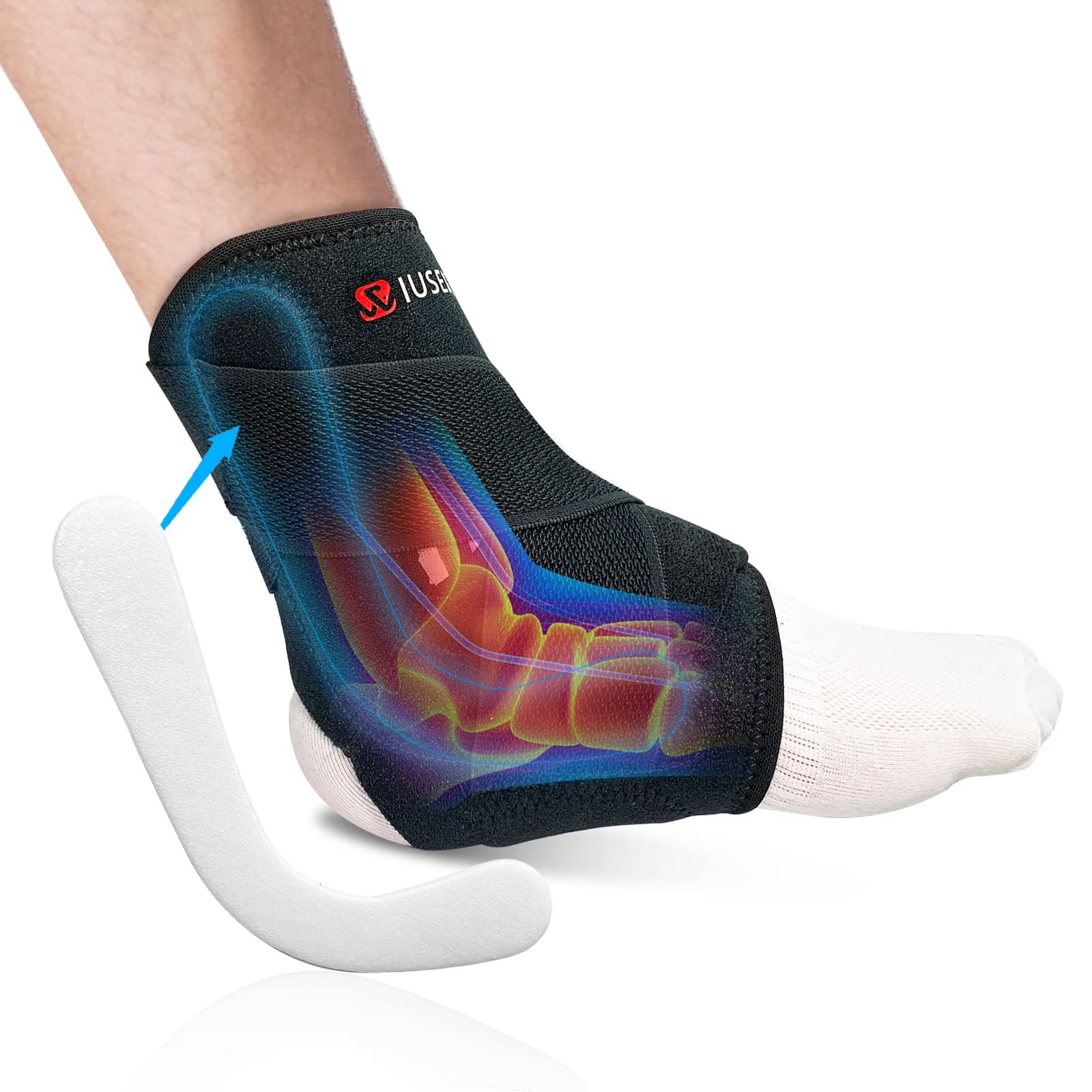
- Pain and swelling in the ankle area
- Bruising or discoloration
- Difficulty or inability to bear weight on the affected ankle
- Limited range of motion in the ankle joint
- A “popping” or “snapping” sound at the time of injury
Differentiating the Injuries
While both a broken ankle and a torn ligament can result in similar symptoms, there are a few key differences that can help distinguish between the two:
- Mechanism of Injury: A broken ankle is typically caused by a sudden, high-impact event, such as a fall or a car accident. In contrast, an ankle sprain is often caused by a twisting or rolling motion, such as when stepping on an uneven surface.
- Deformity: A broken ankle may cause visible deformity or misshaping of the ankle, whereas an ankle sprain is less likely to result in such a noticeable physical change.
- Ability to Bear Weight: Individuals with a broken ankle will typically be unable to bear any weight on the affected ankle, while those with a severe ankle sprain may be able to put some weight on the injured ankle, albeit with significant pain and discomfort.
Treatment Approaches
The treatment for a broken ankle and a torn ligament can vary significantly, so it’s important to receive an accurate diagnosis from a healthcare professional.

Broken Ankle Treatment
Treatment for a broken ankle may involve immobilization with a cast or splint, pain medication, and in some cases, surgical intervention to realign and stabilize the broken bones. The recovery time for a broken ankle can range from 6 weeks to several months, depending on the severity of the injury.
Ankle Sprain Treatment
The initial treatment for an ankle sprain typically involves the RICE (rest, ice, compression, and elevation) method, as well as anti-inflammatory medication. For more severe sprains, physical therapy or even surgical intervention may be necessary to restore stability to the ankle joint. The recovery time for an ankle sprain can vary from a few days to several months, depending on the severity of the injury.
Seeking Professional Advice
If you have sustained an ankle injury, it’s crucial to seek medical attention from a qualified healthcare professional, such as a podiatrist or orthopedist. They will be able to accurately diagnose your condition and provide the appropriate treatment plan to ensure a full and successful recovery.

Conclusion
Differentiating between a broken ankle and a torn ligament is an important step in receiving the right treatment and achieving a successful recovery. By understanding the key symptoms and characteristics of each injury, you can work closely with your healthcare provider to determine the best course of action and get back on your feet as soon as possible.
Difference Between a Broken Ankle and a Torn Ligament
If you are suffering from ankle pain, it can be hard to tell if you are suffering from a broken ankle or a torn ligament. Once you experience ankle pain, you should see a podiatrist to receive the proper diagnosis and treatment options, possibly ankle ligament reconstruction surgery.
If you can’t put weight on your foot and it is swollen or bruised, it might be a broken ankle, which is also known as an ankle fracture. This is when one of the three ankle bones break. One bone break isn’t a terrible injury, but multiple bone breaks could cause you to lose stability and if not treated right away, it will end up causing severe ligament damage.
Signs of a broken ankle include: hearing a crack during the fracture, misshape of the bone, and pain over the ankle bone.
Treatment for an Ankle Fracture
When the fracture isn’t too severe, you might just need to rest, ice, elevate, take pain relievers and use crutches or a cast. A podiatrist can align the bones to help it heal. If the bones are unable to stay in place after the alignment, you will need surgery. Depending on the severity of the ankle fracture, the recovery time can range from 6 weeks to a few months. Once you do heal, you will most likely need to attend physical therapy or some form of rehabilitation to do stretching and balancing exercises.
A podiatrist can align the bones to help it heal. If the bones are unable to stay in place after the alignment, you will need surgery. Depending on the severity of the ankle fracture, the recovery time can range from 6 weeks to a few months. Once you do heal, you will most likely need to attend physical therapy or some form of rehabilitation to do stretching and balancing exercises.
Ankle Fracture Surgery
To repair a severe ankle fracture, ankle fracture surgery will be needed. This helps your ankle heal with a stable internal fixation screwed into the bone. This plate will help keep the portion of the bone aligned so it can heal properly. Be prepared to not place weight on the foot for 3 to 10 weeks, followed by wearing a boot or cast until fully healed. Physical therapy will also be a helpful addition.
What is an Ankle Sprain?
An ankle sprain is when there is damage to the ligaments in the ankle. Ligaments are stretchy bands that help keep bones in place and keep joints stable.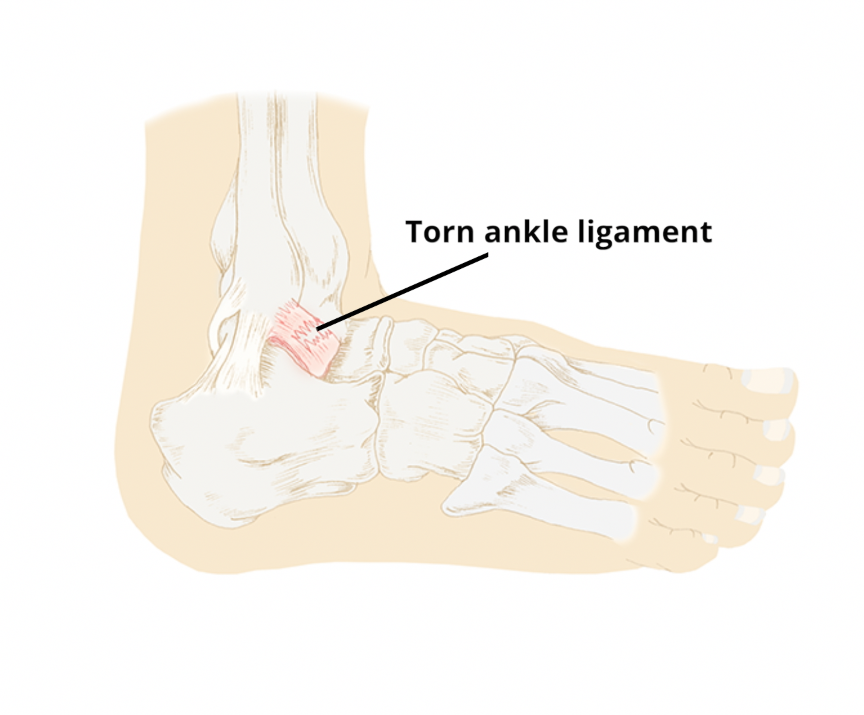 When they are torn or stretched beyond their limit, the result is a painful injury.
When they are torn or stretched beyond their limit, the result is a painful injury.
Signs of a torn ligament include: a popping noise or silence when spraining your ankle, swelling and pain on the outside and soft part of the ankle.
Treatment for a Torn Ligament in the Ankle
Sometimes an ankle sprain can heal on its own after time, but some may need treatment. Most ankle sprains are first treated with anti-inflammatory medication, rest, ice, compression bandages and elevation. If the sprain is moderate, physical therapy might be added in. Severe ankle sprains will require surgery. Depending on the severity of the sprain, recovery can take just a few days, to a few weeks, to several months.
Ankle Ligament Reconstruction Surgery
Ankle ligament reconstruction surgery might be needed for severe ankle sprains. This will help restore the stability of the ankle. After 6 months of non-surgical treatment, if you are still experiencing pain, this treatment option might be best. At the Foot and Ankle Center of Arizona, we use the Brostrom Gould technique. During surgery, stitches and anchors are placed in the fibula bone to tighten the ankle ligaments. Dissolving stitches are used and a splint is applied following surgery. Once the swelling goes down, a cast is typically worn for 3 to 4 weeks. However, you won’t be able to put weight on your foot for about 4 to 6 weeks. Physical therapy will be needed throughout the recovery process and a full recovery could take 6 to 12 months.
At the Foot and Ankle Center of Arizona, we use the Brostrom Gould technique. During surgery, stitches and anchors are placed in the fibula bone to tighten the ankle ligaments. Dissolving stitches are used and a splint is applied following surgery. Once the swelling goes down, a cast is typically worn for 3 to 4 weeks. However, you won’t be able to put weight on your foot for about 4 to 6 weeks. Physical therapy will be needed throughout the recovery process and a full recovery could take 6 to 12 months.
The Foot and Ankle Center of Arizona
We offer cutting edge podiatry to help you find the relief you need with positive influence. We offer a number of different treatment options, all performed by a licensed, experienced and knowledgeable podiatrist. The entire staff at the Arizona Foot and Ankle Centers will provide you with only the finest foot and ankle care to get you back on your feet.
Is My Ankle Sprained or Broken? How to Tell The Difference
Written by WebMD Editorial Contributors
Medically Reviewed by Jennifer Robinson, MD on April 24, 2023
- What’s an Ankle Sprain?
- What’s an Ankle Fracture?
- How Can I Tell the Difference?
- Treatment for a Sprain
- Treatment for a Fracture
- Recovery Times
- More
You’ve injured your ankle and can’t put your weight on it.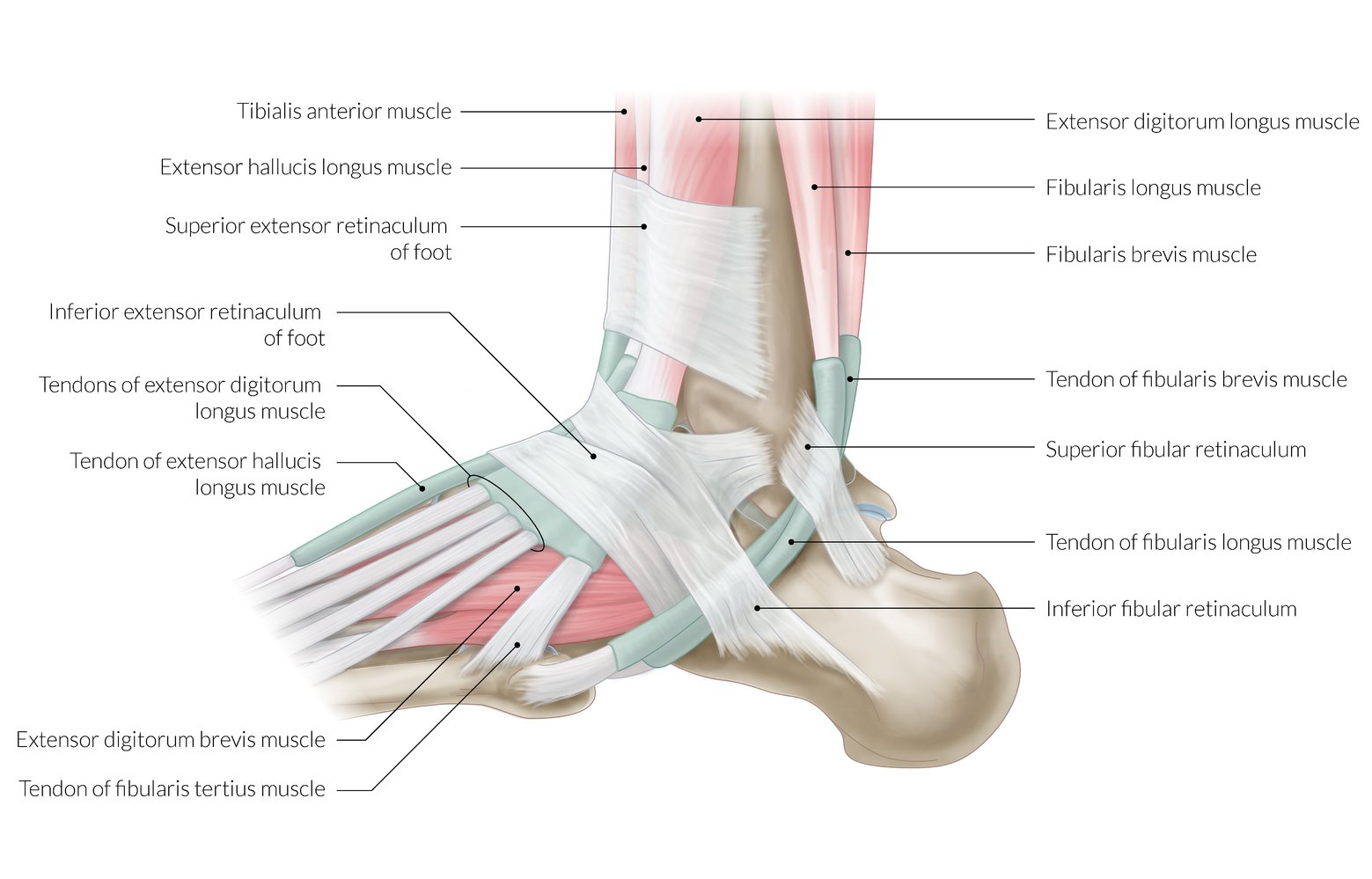 It hurts and is tender to the touch, bruised, and swollen. It could be a sprain, or it might be broken.
It hurts and is tender to the touch, bruised, and swollen. It could be a sprain, or it might be broken.
The symptoms of an ankle sprain are a lot like a fracture, but you’ll need to know which injury you have so you can heal the right way.
This happens when you damage the ligaments in your ankle.
Ligaments are the tough, stretchy bands that hold your bones in place and help keep the joint stable. They’re meant to stretch and move, but only to a point. A sprain means that a ligament is torn or stretched beyond its limits.
This happens when at least one of three bones in your ankle breaks.
If just one bone is broken, you may not realize how bad the injury is. But if multiple bones break at once, you will lose stability in your ankle and may not be able to walk.
An ankle fracture can also lead to ligament damage.
To help figure out what the injury might be, ask yourself a few questions:
- Was there a noise when it happened? A sprain may occur silently, or in severe cases there may be a popping sound.
 With a fracture, you might hear a crack.
With a fracture, you might hear a crack. - Is your ankle misshapen? While swelling is a symptom of both injuries, if your ankle looks clearly “off,” it’s most likely because a bone is broken.
- Does your ankle feel numb? With a sprain, you feel pain. But if you have numbness or tingling, your ankle is most likely broken.
- Where is the pain? If your ankle hurts or is tender to the touch directly over your ankle bone, you probably have a fracture. If the pain is in the soft part of your ankle, it’s more likely a sprain.
If you’re still not sure, see your doctor. They can examine your ankle and give you a number of tests to figure out which injury you have.
It’s usually less involved when you are healing from a sprain. Most sprains will clear up on their own.
You may take anti-inflammatory drugs such as ibuprofen (Advil, Motrin) or naproxen (Aleve).
And your doctor may advise you to try the “RICE” method to ease your inflammation:
- Rest
- Ice
- Compression (with an elastic bandage)
- Elevation (ankle above the heart)
You may need physical therapy for a moderate sprain. You should start range of motion exercises once the pain and swelling subside. Surgery is usually for severe cases when other treatments have failed.
You should start range of motion exercises once the pain and swelling subside. Surgery is usually for severe cases when other treatments have failed.
If you think your ankle is broken, you should get medical treatment right away. You need to have the ankle immobilized. This could involve crutches or a cast.
Your doctor may try to align the broken bones to help you heal. If the bones are unable to stay in place after your doctor has tried to stabilize the fracture, you might need surgery.
You can also apply ice, elevate your ankle, and take pain relievers. Talk to your doctor.
These can be vastly different for the two injuries as well.
A sprain may clear up within days, with worse sprains needing several weeks to heal.
Fractures usually take much longer. It could be 6 weeks to several months before you’re back to your regular routine. For most ankle fractures, you can do your rehab with a basic home exercise program of stretching, range of motion, strengthening, and balance exercises.
Top Picks
Ankle fracture – how it happens, classification, treatment methods
The information provided on the page should not be used for self-treatment or self-diagnosis. If you suspect a disease, you should seek help from a qualified specialist. Only your doctor can diagnose and prescribe treatment.
Contents of the article:
- How fracture occurs
- Ankle fracture classification
- Symptoms
- Diagnostics
- First aid
- Treatment and clinical guidelines
- Surgical treatment
- Possible complications
What is an ankle fracture?
An ankle fracture is a partial or complete fracture of the leg bones. Ankle fractures can range in severity from less severe injuries involving small pieces of bone near the joint to severe fractures of the tibia and fibula, or both. Ankle fractures are common injuries, most often caused by the ankle twisting inward or outward. Many people mistake an ankle fracture for an ankle sprain, but the consequences are completely different and therefore require accurate and early diagnosis. Treatment and rehabilitation at home depends on this. Fortunately, both surgical and non-surgical treatments are being used today. All ankle fracture injuries should be evaluated by a physician to determine severity.
Ankle fractures can range in severity from less severe injuries involving small pieces of bone near the joint to severe fractures of the tibia and fibula, or both. Ankle fractures are common injuries, most often caused by the ankle twisting inward or outward. Many people mistake an ankle fracture for an ankle sprain, but the consequences are completely different and therefore require accurate and early diagnosis. Treatment and rehabilitation at home depends on this. Fortunately, both surgical and non-surgical treatments are being used today. All ankle fracture injuries should be evaluated by a physician to determine severity.
How a fracture occurs
Ankle fractures, more commonly known as ankle fractures, occur when one or more of the bones that make up the ankle joint is broken. Although an ankle fracture is an injury seen at almost any age, it is more common among older people and athletes who are physically active.
When the bones are damaged, the ankle becomes unstable. With the addition of ligament injuries, the injury can become a very serious problem, complications after an ankle fracture are possible.
With the addition of ligament injuries, the injury can become a very serious problem, complications after an ankle fracture are possible.
An ankle fracture can be caused by sudden, inadvertent movement, such as twisting the ankle during sports or activity. Car accidents can also cause ankle fractures, especially after heavy impacts.
Also, a person can trip, fall, twist the ankle – this can cause an ankle fracture. Depending on age and previous health conditions, this problem can develop into much more serious damage if left untreated. Source:
Ankle injury analysis. Tailashev M.M., Salatin P.P., Sobolev V.V., Pozikov V.V., Kolesnikov A.S. Acta Biomedica Scientifica, 2008. p. 144-145.
Classification of ankle fractures
The ankle joint itself is formed by three bones – this is the largest tibia, then the fibula (shin bone) and the talus. It is located in the area between the calcaneus, as well as the greater and fibular bones. Ankle fractures are classified according to the area of the broken bone:
- fracture in the area of the medial malleolus is the inner surface of the tibia;
- posterior malleolus injury is the dorsum of the tibia;
- lateral malleolus fracture is an injury to the edge of the fibula.

The stability of the ankle joint is determined by the strength of the ligaments and bones. In case of fractures in the area of the ankle joint, two joints are affected:
- ankle joint – formed by the lower leg, talus, fibula;
- joint syndesmosis is the area between the tibia and fibula held together by ligaments Source:
Ankle joint fractures and treatments. Cherednik A.A., More Gautam Saherbao, Al-Fakih Abdulaziz. Bulletin of Medical Internet Conferences, 2014. p.432.
Symptoms
Since a sprain can sometimes feel like a broken ankle, it is always important to consult a doctor. Assessing the symptoms of an ankle fracture and post-injury pain helps in determining how serious the injury is.
An ankle fracture is accompanied by one or all of the following symptoms:
- pain at the fracture site, which in some cases may radiate from the foot to the knee;
- Significant swelling that may occur along the length of the leg or be more localized.
 How long the swelling lasts will depend on the severity of the injury and the amount of damaged tissue;
How long the swelling lasts will depend on the severity of the injury and the amount of damaged tissue; - a bruise that appears shortly after the injury;
- inability to walk, stepping on the whole leg. Therefore, the doctor will tell you how to walk correctly after an injury. However, a person can walk with less severe fractures, so never rely on walking as a test to see if a bone has been broken;
- changed the appearance of the ankle – it will be different from the other ankle;
- bone protrudes from under the skin in an open fracture. Fractures penetrating the skin require immediate intervention as they can lead to severe infection and prolonged recovery.
Diagnosis
The doctor will discuss with the patient the medical history (how long it hurts, before the injury) and symptoms. He will also ask how the injury happened and examine the affected area. If the traumatologist believes that you may have broken your ankle, they will order a series of examinations to more fully study the injury.
X-ray : X-rays can show if the ankle bone has been broken and how many fragments of the broken bone are there. They can also determine if there is a dislocation (tear between broken bones). The doctor may also take x-rays of other parts of the leg or foot to make sure nothing was damaged as a result of the injury.
Stress Test : A stress test is performed to determine if surgical procedures are needed to heal an injury. The doctor will put some pressure on the ankle and take a special x-ray to determine the severity of the lesion.
CT Scan (Computed Tomography): If the fracture extends beyond the ankle joint, a CT scan may be required to further investigate the injury. CT scanning allows you to get an image of a series of images in different planes, by which the doctor can determine the severity of the injury. Source:
Comprehensive diagnosis of ankle injuries. Kim L.I., Dyachkova G.V. Genius of Orthopedics, 2013. pp. 20-24.
pp. 20-24.
MRI scan (Magnetic Resonance Imaging): If the doctor suspects a ligament injury has occurred, they may order an MRI scan to better view the affected area. MRI can look deeper into bones and soft tissues, such as ligaments, to create higher resolution images than most other tests.
Ankle fracture first aid
Ankle fracture treatment depends on the type and severity of the injury. First aid is needed to prevent further damage from a broken ankle and shorten the time for bone healing.
- Rest : relieve the injured ankle. Walking can lead to further injury, and only a doctor can determine when to step on your foot.
- Ice : apply an ice pack to the injured area by placing a thin towel between the ice and the skin. You need to use ice for 20 minutes and then wait at least 40 minutes before doing a cold compress again.
- Compression : An elastic bandage should be used to control swelling.

- Height : Ankle should be slightly elevated above heart level to reduce swelling.
Ankle fracture: treatment, clinical guidelines
If the traumatologist determines that the patient has a broken ankle, it is necessary to determine what type of fracture it is and how to treat it. Ankle fractures can be treated with non-surgical methods, as long as the injury is not too severe or unstable.
- Lateral fibula fracture . If the ankle is stable, non-surgical healing methods are available. These can range from wearing tall tennis shoes to short casts. The doctor may recommend rest and crutches to keep the foot light and to make sure that the fragments do not move during healing.
- Fracture of the tibia on the inside of the lower leg . If the fracture is all in place or if it is very minor, it can be cured if the ankle is not stressed for 6 weeks. A short leg bandage or a removable bandage, as well as a doctor’s recommendation when it is possible to walk, usually speeds up the healing process.

- Fracture of the back of the leg at the level of the ankle joint . In most cases, the fibula also breaks due to the fact that it shares ligaments with the posterior malleolus. If the ankle remains stable, it can be treated without surgery. Treatment may include a short leg bandage or a removable brace. It is important to determine the severity so that arthritis does not develop. As you heal, you will need to gradually develop an ankle fracture.
- Bimalleolar equivalent fracture (two of the three parts of the ankle broken) indicates that the ligaments on the inside of the ankle are also damaged. Because these injuries are usually unstable, surgery is usually recommended. In case of health problems that may interfere with the operation, a splint and a short bandage on the leg may be applied. You will need to see your doctor regularly to make sure your ankle remains stable.
- Trimalleolar fracture (all three parts of the ankle are broken).
 Since this is a very difficult situation, surgery is almost always recommended. Rare non-surgical treatment options include a short leg bandage, a splint, and regular doctor visits.
Since this is a very difficult situation, surgery is almost always recommended. Rare non-surgical treatment options include a short leg bandage, a splint, and regular doctor visits.
If the joint located between the tibia and fibula is damaged, and the ligaments are also affected, the damage can heal like an ankle sprain. The injury can be treated by removing weight from it without surgery.
However, in most cases sprains and one or more fractures occur. Recovery after an ankle fracture is rarely without surgical treatment. Source:
Treatment tactics for intra-articular fractures of the ankle joint (literature review). Zedgenidze I.V., Tishkov N.V. Acta Biomedica Scientifica, 2013. pp. 178-182.
Surgery
In the event that non-surgical treatments do not work or the ankle is too unstable, your doctor may recommend surgery for a broken ankle, followed by rehabilitation. After the operation, it is important to walk the leg, perform all the prescribed procedures in order to shorten the rehabilitation period.
Features of the operation: if the fragments are not in place, the bone fragments must be moved surgically. The fragments had to be returned to their normal position and fastened with special screws and metal plates attached to the outer surface of the bone. The surgery may involve bone grafting so that the new bone can actively heal. It is fixed with screws and a metal plate. This may reduce the risk of arthritis and speed up the return of movement.
Possible complications
After treatment, it is important to follow the surgeon’s instructions. Failure to follow this rule can lead to infection, deformity, arthritis, and chronic pain. Source:
Errors and complications in the treatment of complex ankle fractures. Salikhov R.Z., Pankov I.O., Plakseichuk Yu.A., Solovyov V.V. Practical medicine, 2014. p. 128-131.
- Mistakes and complications in the treatment of complex fractures of the ankle joint. Salikhov R.Z., Pankov I.O., Plakseichuk Yu.
 A., Solovyov V.V. Practical medicine, 2014. p. 128-131
A., Solovyov V.V. Practical medicine, 2014. p. 128-131 - Ankle injury analysis. Tailashev M.M., Salatin P.P., Sobolev V.V., Pozikov V.V., Kolesnikov A.S. Acta Biomedica Scientifica, 2008. p. 144-145
- Comprehensive diagnosis of ankle joint injuries. Kim L.I., Dyachkova G.V. Genius of Orthopedics, 2013. p.20-24
- Fractures of the ankle joint and methods of treatment. Cherednik A.A., More Gautam Saherbao, Al-Fakih Abdulaziz. Bulletin of Medical Internet Conferences, 2014. p.432
- Therapeutic tactics for intra-articular fractures of the ankle joint (literature review). Zedgenidze I.V., Tishkov N.V. Acta Biomedica Scientifica, 2013. p.178-182
Ankle fracture – how it happens, classification, treatment methods
The information provided on this page should not be used for self-treatment or self-diagnosis. If you suspect a disease, you should seek help from a qualified specialist. Only your doctor can diagnose and prescribe treatment.
Content of the article:
- How a fracture occurs
- Ankle fracture classification
- Symptoms
- Diagnostics
- First aid
- Treatment and clinical guidelines
- Surgical treatment
- Possible complications
What is an ankle fracture?
An ankle fracture is a partial or complete fracture of the leg bones. Ankle fractures can range in severity from less severe injuries involving small pieces of bone near the joint to severe fractures of the tibia and fibula, or both. Ankle fractures are common injuries, most often caused by the ankle twisting inward or outward. Many people mistake an ankle fracture for an ankle sprain, but the consequences are completely different and therefore require accurate and early diagnosis. Treatment and rehabilitation at home depends on this. Fortunately, both surgical and non-surgical treatments are being used today. All ankle fracture injuries should be evaluated by a physician to determine severity.
How a fracture occurs
Ankle fractures, more commonly known as ankle fractures, occur when one or more of the bones that make up the ankle joint is broken. Although an ankle fracture is an injury seen at almost any age, it is more common among older people and athletes who are physically active.
When the bones are damaged, the ankle becomes unstable. With the addition of ligament injuries, the injury can become a very serious problem, complications after an ankle fracture are possible.
An ankle fracture can be caused by sudden, inadvertent movement, such as twisting the ankle during sports or activity. Car accidents can also cause ankle fractures, especially after heavy impacts.
Also, a person can trip, fall, twist the ankle – this can cause an ankle fracture. Depending on age and previous health conditions, this problem can develop into much more serious damage if left untreated. Source:
Ankle injury analysis. Tailashev M.M., Salatin P.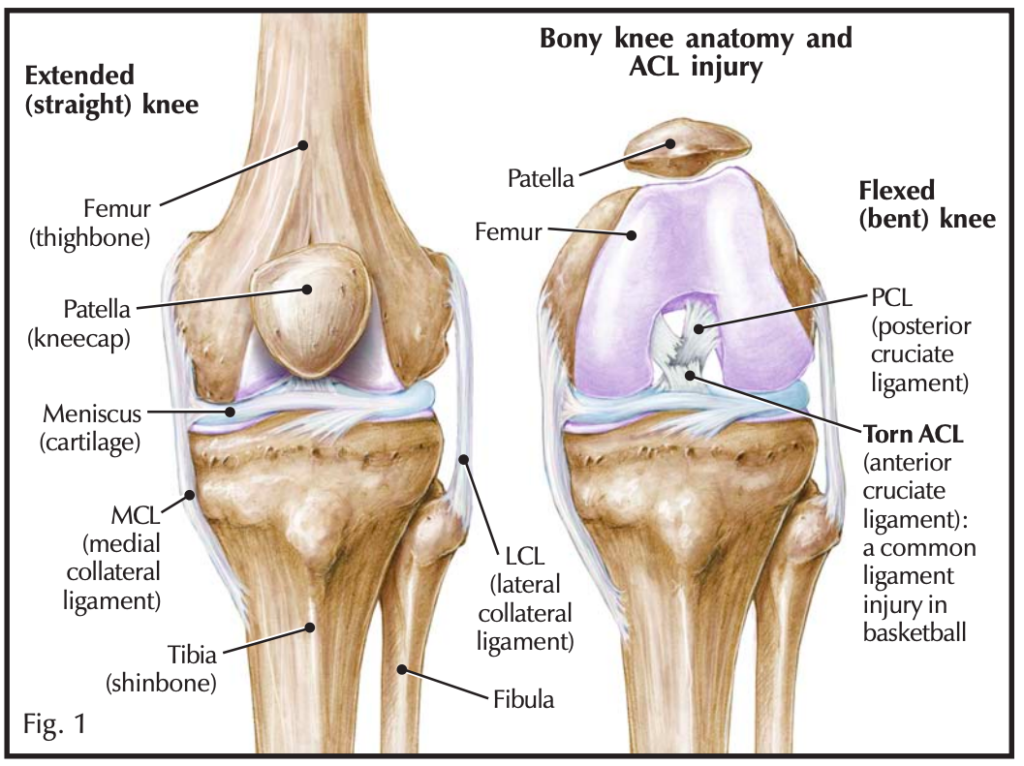 P., Sobolev V.V., Pozikov V.V., Kolesnikov A.S. Acta Biomedica Scientifica, 2008. p. 144-145.
P., Sobolev V.V., Pozikov V.V., Kolesnikov A.S. Acta Biomedica Scientifica, 2008. p. 144-145.
Classification of ankle fractures
The ankle joint itself is formed by three bones – this is the largest tibia, then the fibula (shin bone) and the talus. It is located in the area between the calcaneus, as well as the greater and fibular bones. Ankle fractures are classified according to the area of the broken bone:
- fracture in the area of the medial malleolus is the inner surface of the tibia;
- posterior malleolus injury is the dorsum of the tibia;
- lateral malleolus fracture is an injury to the edge of the fibula.
The stability of the ankle joint is determined by the strength of the ligaments and bones. In case of fractures in the area of the ankle joint, two joints are affected:
- ankle joint – formed by the lower leg, talus, fibula;
- joint syndesmosis is the area between the tibia and fibula held together by ligaments Source:
Ankle joint fractures and treatments. Cherednik A.A., More Gautam Saherbao, Al-Fakih Abdulaziz. Bulletin of Medical Internet Conferences, 2014. p.432.
Cherednik A.A., More Gautam Saherbao, Al-Fakih Abdulaziz. Bulletin of Medical Internet Conferences, 2014. p.432.
Symptoms
Since a sprain can sometimes feel like a broken ankle, it is always important to consult a doctor. Assessing the symptoms of an ankle fracture and post-injury pain helps in determining how serious the injury is.
An ankle fracture is accompanied by one or all of the following symptoms:
- pain at the fracture site, which in some cases may radiate from the foot to the knee;
- Significant swelling that may occur along the length of the leg or be more localized. How long the swelling lasts will depend on the severity of the injury and the amount of damaged tissue;
- a bruise that appears shortly after the injury;
- inability to walk, stepping on the whole leg. Therefore, the doctor will tell you how to walk correctly after an injury. However, a person can walk with less severe fractures, so never rely on walking as a test to see if a bone has been broken;
- changed the appearance of the ankle – it will be different from the other ankle;
- bone protrudes from under the skin in an open fracture.
 Fractures penetrating the skin require immediate intervention as they can lead to severe infection and prolonged recovery.
Fractures penetrating the skin require immediate intervention as they can lead to severe infection and prolonged recovery.
Diagnosis
The doctor will discuss with the patient the medical history (how long it hurts, before the injury) and symptoms. He will also ask how the injury happened and examine the affected area. If the traumatologist believes that you may have broken your ankle, they will order a series of examinations to more fully study the injury.
X-ray : X-rays can show if the ankle bone has been broken and how many fragments of the broken bone are there. They can also determine if there is a dislocation (tear between broken bones). The doctor may also take x-rays of other parts of the leg or foot to make sure nothing was damaged as a result of the injury.
Stress Test : A stress test is performed to determine if surgical procedures are needed to heal an injury. The doctor will put some pressure on the ankle and take a special x-ray to determine the severity of the lesion.
CT Scan (Computed Tomography): If the fracture extends beyond the ankle joint, a CT scan may be required to further investigate the injury. CT scanning allows you to get an image of a series of images in different planes, by which the doctor can determine the severity of the injury. Source:
Comprehensive diagnosis of ankle injuries. Kim L.I., Dyachkova G.V. Genius of Orthopedics, 2013. pp. 20-24.
MRI scan (Magnetic Resonance Imaging): If the doctor suspects a ligament injury has occurred, they may order an MRI scan to better view the affected area. MRI can look deeper into bones and soft tissues, such as ligaments, to create higher resolution images than most other tests.
Ankle fracture first aid
Ankle fracture treatment depends on the type and severity of the injury. First aid is needed to prevent further damage from a broken ankle and shorten the time for bone healing.
- Rest : relieve the injured ankle.
 Walking can lead to further injury, and only a doctor can determine when to step on your foot.
Walking can lead to further injury, and only a doctor can determine when to step on your foot. - Ice : apply an ice pack to the injured area by placing a thin towel between the ice and the skin. You need to use ice for 20 minutes and then wait at least 40 minutes before doing a cold compress again.
- Compression : An elastic bandage should be used to control swelling.
- Height : Ankle should be slightly elevated above heart level to reduce swelling.
Ankle fracture: treatment, clinical guidelines
If the traumatologist determines that the patient has a broken ankle, it is necessary to determine what type of fracture it is and how to treat it. Ankle fractures can be treated with non-surgical methods, as long as the injury is not too severe or unstable.
- Lateral fibula fracture . If the ankle is stable, non-surgical healing methods are available. These can range from wearing tall tennis shoes to short casts.
 The doctor may recommend rest and crutches to keep the foot light and to make sure that the fragments do not move during healing.
The doctor may recommend rest and crutches to keep the foot light and to make sure that the fragments do not move during healing. - Fracture of the tibia on the inside of the lower leg . If the fracture is all in place or if it is very minor, it can be cured if the ankle is not stressed for 6 weeks. A short leg bandage or a removable bandage, as well as a doctor’s recommendation when it is possible to walk, usually speeds up the healing process.
- Fracture of the back of the leg at the level of the ankle joint . In most cases, the fibula also breaks due to the fact that it shares ligaments with the posterior malleolus. If the ankle remains stable, it can be treated without surgery. Treatment may include a short leg bandage or a removable brace. It is important to determine the severity so that arthritis does not develop. As you heal, you will need to gradually develop an ankle fracture.
- Bimalleolar equivalent fracture (two of the three parts of the ankle broken) indicates that the ligaments on the inside of the ankle are also damaged.
 Because these injuries are usually unstable, surgery is usually recommended. In case of health problems that may interfere with the operation, a splint and a short bandage on the leg may be applied. You will need to see your doctor regularly to make sure your ankle remains stable.
Because these injuries are usually unstable, surgery is usually recommended. In case of health problems that may interfere with the operation, a splint and a short bandage on the leg may be applied. You will need to see your doctor regularly to make sure your ankle remains stable. - Trimalleolar fracture (all three parts of the ankle are broken). Since this is a very difficult situation, surgery is almost always recommended. Rare non-surgical treatment options include a short leg bandage, a splint, and regular doctor visits.
If the joint located between the tibia and fibula is damaged, and the ligaments are also affected, the damage can heal like an ankle sprain. The injury can be treated by removing weight from it without surgery.
However, in most cases sprains and one or more fractures occur. Recovery after an ankle fracture is rarely without surgical treatment. Source:
Treatment tactics for intra-articular fractures of the ankle joint (literature review). Zedgenidze I.V., Tishkov N.V. Acta Biomedica Scientifica, 2013. pp. 178-182.
Zedgenidze I.V., Tishkov N.V. Acta Biomedica Scientifica, 2013. pp. 178-182.
Surgery
In the event that non-surgical treatments do not work or the ankle is too unstable, your doctor may recommend surgery for a broken ankle, followed by rehabilitation. After the operation, it is important to walk the leg, perform all the prescribed procedures in order to shorten the rehabilitation period.
Features of the operation: if the fragments are not in place, the bone fragments must be moved surgically. The fragments had to be returned to their normal position and fastened with special screws and metal plates attached to the outer surface of the bone. The surgery may involve bone grafting so that the new bone can actively heal. It is fixed with screws and a metal plate. This may reduce the risk of arthritis and speed up the return of movement.
Possible complications
After treatment, it is important to follow the surgeon’s instructions. Failure to follow this rule can lead to infection, deformity, arthritis, and chronic pain.

 With a fracture, you might hear a crack.
With a fracture, you might hear a crack.
 How long the swelling lasts will depend on the severity of the injury and the amount of damaged tissue;
How long the swelling lasts will depend on the severity of the injury and the amount of damaged tissue;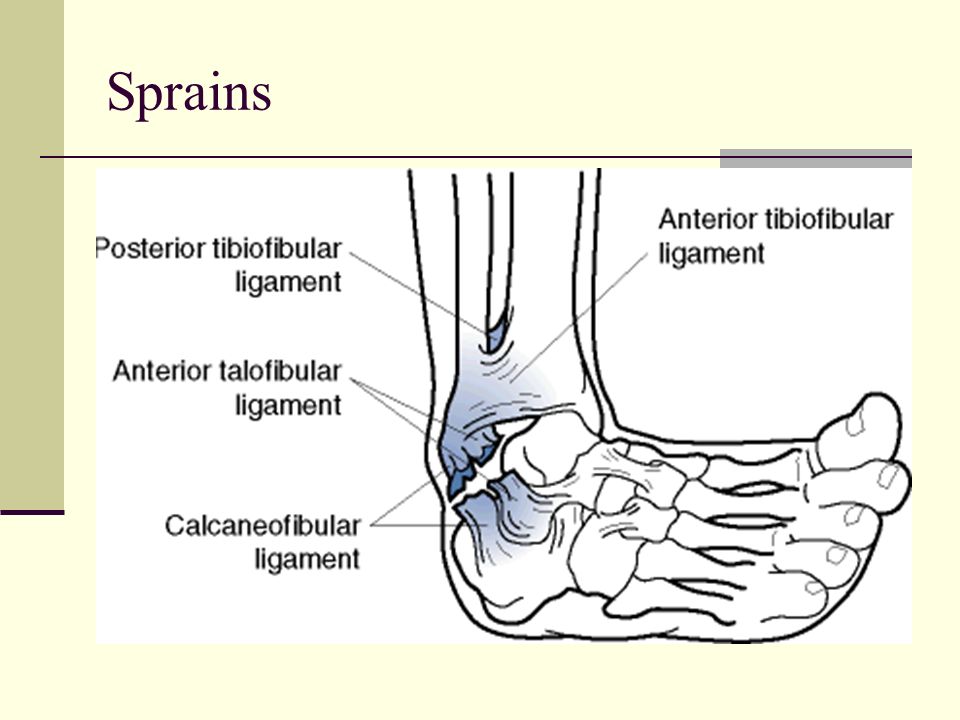

 Since this is a very difficult situation, surgery is almost always recommended. Rare non-surgical treatment options include a short leg bandage, a splint, and regular doctor visits.
Since this is a very difficult situation, surgery is almost always recommended. Rare non-surgical treatment options include a short leg bandage, a splint, and regular doctor visits. A., Solovyov V.V. Practical medicine, 2014. p. 128-131
A., Solovyov V.V. Practical medicine, 2014. p. 128-131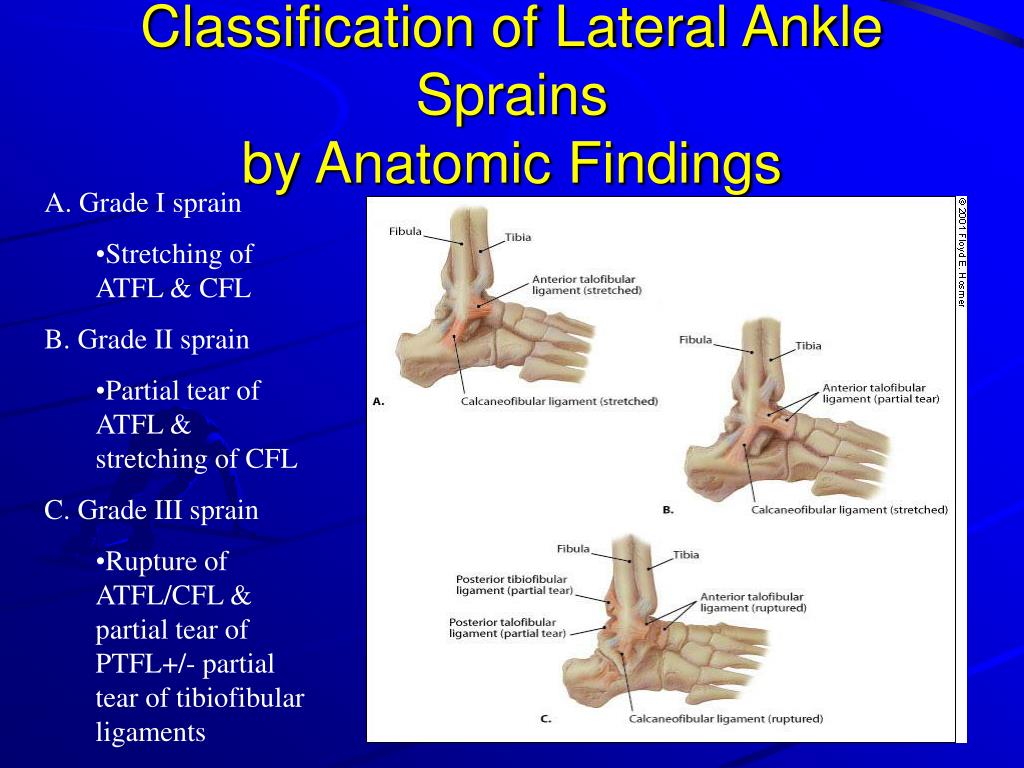 Cherednik A.A., More Gautam Saherbao, Al-Fakih Abdulaziz. Bulletin of Medical Internet Conferences, 2014. p.432.
Cherednik A.A., More Gautam Saherbao, Al-Fakih Abdulaziz. Bulletin of Medical Internet Conferences, 2014. p.432.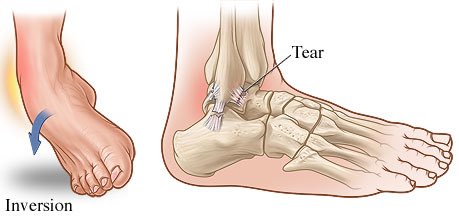 Fractures penetrating the skin require immediate intervention as they can lead to severe infection and prolonged recovery.
Fractures penetrating the skin require immediate intervention as they can lead to severe infection and prolonged recovery. Walking can lead to further injury, and only a doctor can determine when to step on your foot.
Walking can lead to further injury, and only a doctor can determine when to step on your foot. The doctor may recommend rest and crutches to keep the foot light and to make sure that the fragments do not move during healing.
The doctor may recommend rest and crutches to keep the foot light and to make sure that the fragments do not move during healing.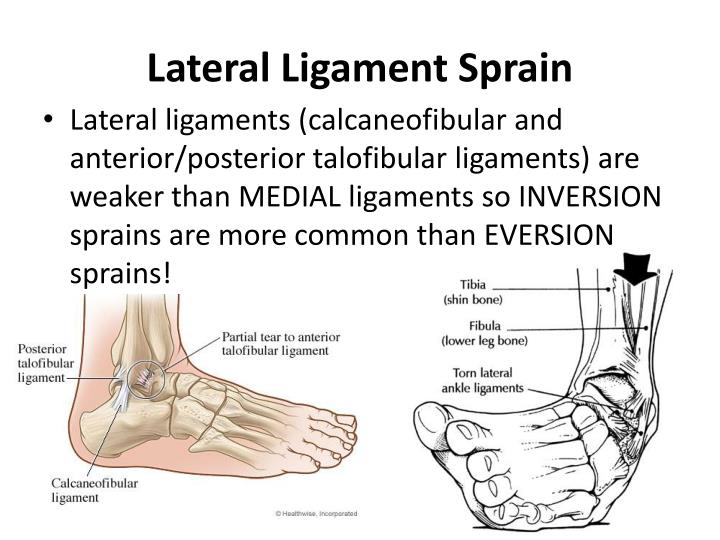 Because these injuries are usually unstable, surgery is usually recommended. In case of health problems that may interfere with the operation, a splint and a short bandage on the leg may be applied. You will need to see your doctor regularly to make sure your ankle remains stable.
Because these injuries are usually unstable, surgery is usually recommended. In case of health problems that may interfere with the operation, a splint and a short bandage on the leg may be applied. You will need to see your doctor regularly to make sure your ankle remains stable.